Comfrey Alkaloids:
Variations and How to Lessen
I sell live Comfrey roots, seeds, and dried comfrey.
Comfrey
Easy Order Page
|
My comments
are in brown. -Nancy
|
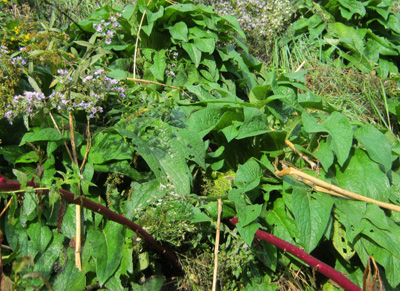
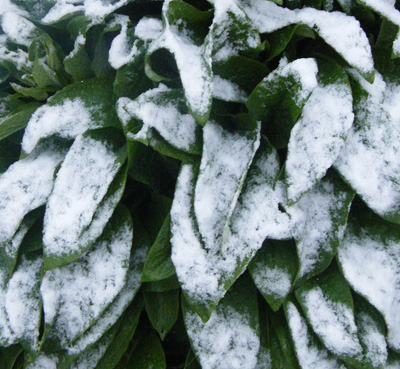 |
Alkaloids
Vary by Season, Age, Plant Type
Seasonal
Variation
"The alkaloid content can also vary from season to season. The
amount of alkaloids in Russian comfrey (S. uplandicum) leaves can vary up
to 16 times depending on the time of year and the size of the leaf."
(A.R. Mattocks, Lancet, November 22nd 1980 as cited in Botanical
Medicine, www.encognitive.com/node/14766)
Climate, Season, Soil
"It is pertinent to note that the alkaloid content in different
parts of the plant (e.g., roots, leaves, stalks, flowers, and buds) varies
and is subject to fluctuations according to the climate, soil conditions,
and time of harvesting. (Danninger et al., 1983; Hartmann & Zimmer, 1986)."
(World Health Organization, International Programme on Chemical
Safety, Environmental Health Criteria 80, Pyrrolizidine Alkaloids, www.inchem.org/documents/ehc/
ehc/ehc080.htm.)
Climate, Season, Age, Part/Type of Plant
"Both the composition and concentration of PAs may fluctuate
according to climatic and environmental conditions, the age and part of
the plant and the variety (genotype/chemotype). The same species growing
in different locations or in different seasons may contain different alkaloids."
(European Medicines Agency, www.ema.europa.eu/docs/en_GB/
document_library/ Public_statement/2012/10/ WC500134311.pdf.)
|
|
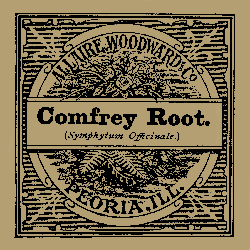
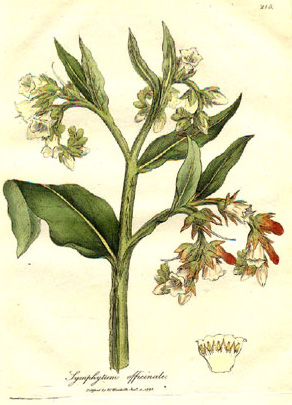
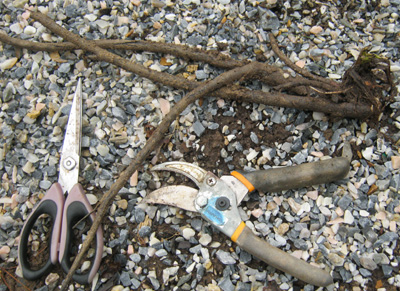 |
Alkaloids-
More in Root than Leaf, More in Young than Mature Growth
Young leaves have higher Alkaloids than larger, older
leaves (and probably more beneficial Allantoin).
Young roots have more than older roots (and probably more Allantion).
Roots have more Alkaloids and Allantoin than leaves.
See my page Comfrey
and Healing for more about how roots seem like concentrated
leaves, with more bad Alkaloids and good Allantoin. Read the section 'Does
More Alkaloids Mean More Allantoin?'.
Mature Leaves Have Fewer Alkaloids.
"It is clear that there are wide differences between concentrations of
alkaloids in young and older comfrey leaves."
(FDA Poisonous Plant Database, FDA #: F01188, Symphytum sp.,
www.accessdata.fda.gov/scripts/ plantox/detail.cfm?id=962.)
"The comments of Mattocks should at least be noted: 'People who consider
the benefit of comfrey to outweigh the (perhaps slight) risk involved may
like to know that large, mature leaves carry the lowest concentration of
toxic alkaloids.'"
(FDA Poisonous Plant Database, www.accessdata.fda.gov/scripts/
plantox/detail.cfm?id=962)
Roots Have More Alkalloids
"Comfrey contains potentially dangerous compounds known as pyrrolizidine
alkaloids. The roots contain higher levels of these compounds and mature
leaves contain very little, if any, of these alkaloids. Fresh young leaves
contain higher amounts (up to 16 times more than mature leaves) and should
be avoided."
(K.A. Winship, Toxicity of Comfrey, Adverse Drug Reactions
and Toxicological Reviews, 1991;10:47-59, cited by University of Michigan
Health System, www.uofmhealth.org/ health-library/hn-2073000.)
Consult your health care provider for advice.
|
|
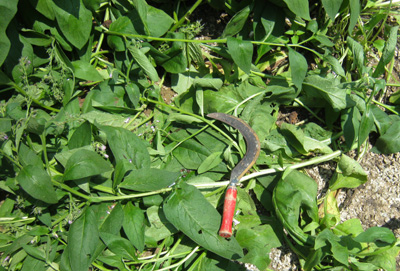
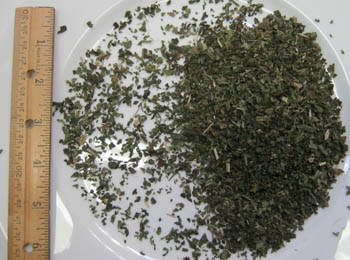
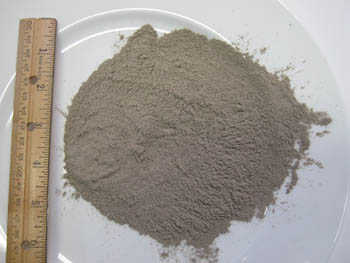 |
Alkaloids:
True vs Russian Comfrey
True Comfrey Has Fewer
Alkaloids than Russian
"As expected PA levels in S. officiale (True) were found to be lower
than in S. uplandicum (Russian), and small, young leaves contained higher
levels of PAs than large, older leaves. Root was found to contain considerably
higher content of PAs than leaves."
(Feasibility of Producing Comfrey- Symphytum spp.- Pellet
as a Feed Supplement, 1999, www.usask.ca.)
Russian Comfrey (spp.?)
"Mattocks (1980) demonstrated that the alkaloid content of the leaves
of Symphytum spp. (Russian comfrey), which are used as an item of food,
varies with their maturity. The toxic PA content is highest at the beginning
of the vegetative period and declines as the leaves mature. The PA content
of the roots is much higher than that of the leaves, and dried leaves contain
a higher concentration than fresh leaves (Mattocks, 1986)."
(World Health Organization, International Programme on Chemical
Safety, Environmental Health Criteria 80, Pyrrolizidine Alkaloids, www.inchem.org/documents/
ehc/ehc/ehc080.htm.)
The above statement 'Symphytum spp. (Russian comfrey)'
is confusing. In botany spp is defined as all species of the genus named
(Symphytum). This includes True/Common, Russian, Prickly and many other
Comfrey cultivars. It does not mean only Russian Comfrey. This is a common
problem in research. Scientists lump one cultivar of comfrey with all the
other comfrey cultivars. Yet each is different in constituents and properties.
The last sentence about dried vs fresh leaves contradicts other studies
that state drying reduces alkaloids. I think drying would reduce alkaloids.
Unless it meant based on weight since fresh leaves would contain a lot of
water. Though this goes to show how confusing much research is because they
are vague about comfrey cultivar, whether root/leaf, dried/fresh, etc.
The photos of the plates are dried/cut comfrey leaf and powdered comfrey
root.
|
|
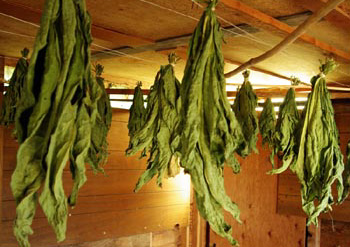 |
Reducing
Alkaloids: Drying
1.
Drying roots and leaves reduces alkaloids.
"When comfrey is dried, enzymes are released and much of the
alkaloid is destroyed."
(Herbs Are Special, Australia, www.herbsarespecial.com.au/
free-herb-information/comfrey.html)
"Drying the comfrey reduces the amounts of alkaloids."
(Permaculture Reflections, www.permaculturereflections.com/2009/02/
species-of-month-comfrey.html.)
|
|
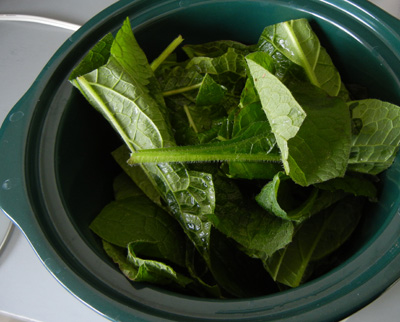 |
Reducing
Alkaloids: Cooking
2.
Cooking lowers the alkaloids. Food in the Nightshade (Solanaceae) Family
also contain alkaloids. These include tomatoes, peppers, eggplant, and white
potatoes. Cooking them reduces their alkaloid content by 40-50%. So probably
the same is true for Comfrey.
"The plant alkaloids are highly water-soluble; boiling or steaming the
leaves in several changes of water may reduce toxicity."
(Georgetown University Medical Center, http://units.georgetown.edu/gumc/
urbanherbs/Comfrey.htm.)
"In addition, cooking will ensure some of the soluble alkaloids are lost
in the vegetable water."
(FDA Poisonous Plant Database, FDA #: F01188, Symphytum sp.,
www.accessdata.fda.gov/scripts/ plantox/detail.cfm?id=962.)
|
|
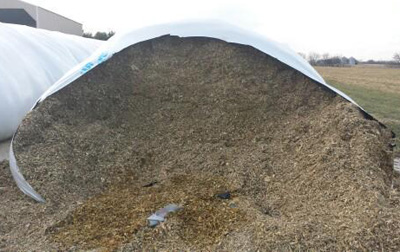 |
Reducing
Alkaloids: Silage
3.
Making silage out of comfrey decreases alkaloid content. Silage is made
by compacting grass or other green fodder. Then storing it in an airtight
container such as a silo, garbage bag, or plastic sheeting. It is not dried
first. It ferments anaerobically (no oxygen). It is a good ruminant animal
feed in winter.
"PAs are largely biodegraded when forages are conserved as silage. A
rapid decline in PA concentrations under composting conditions was also
observed."
(European Food Safety Authority, Scientific Opinion on Pyrrolizidine
Alkaloids in Food and Feed, 2011, www.efsa.europa.eu/en/ search/doc/2406.pdf)
|
|
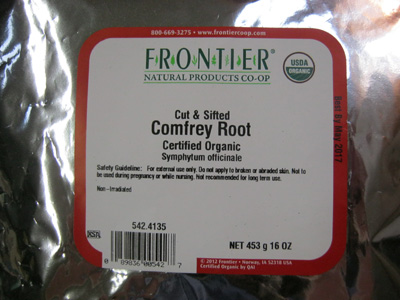
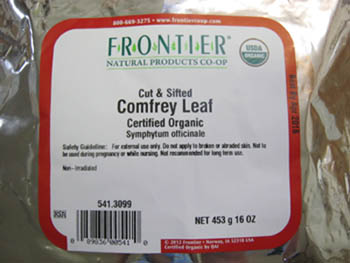 |
Reducing
Alkaloids: Storing
4.
Storing for a long time lowers alkaloids. This includes hay and silage with
comfrey in it. Also dried leaves and roots sold in bulk by the pound or
in pill form.
"According to Danninger et al. (1983), in some species (Symphytum
asperum= Rough/Prickly Comfrey), relatively long storage may lead to a reduction
in the alkaloid content, presumably because enzymes are released during
drying."
"Candrian et al. (1984b) studied the stability of PAs in hay and silage
containing various amounts of Senecio alpinus (a plant high in alkaloids).
The PA content of hay remained constant for several months, but the PAs
in silage were mainly degraded. However, the degradation of PAs was much
less complete in the lower concentration range."
(The above 2 paragraphs are from the World Health Organization,
International Programme on Chemical Safety, Environmental Health Criteria
80, Pyrrolizidine Alkaloids, www.inchem.org/documents/ ehc/ehc/ehc080.htm)
|
|
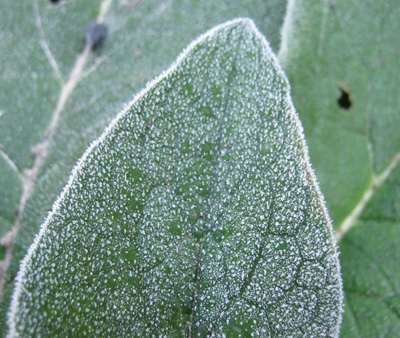 |
Reducing
Alkaloids: Cold
5.
Time of harvest and climate affect alkaloid content. Cold winters reduce
alkaloid levels.
"Leaves for medicinal use should be harvested during blooming due to
lower alkaloid content."
(The Medicinal Herb Gardens at Ohio Northern University,
https://webstu.onu.edu/ garden/node/325)
"Some comfreys are more toxic than others. Russian comfrey (Symphytum
x uplandicum) is one of the worst. And there's more hepatotoxic PAs in comfreys
that are grown without a real winter, eg. in California."
(Henriettes Herbal, Henriette Kress, www.henriettes-herb.com)
Contact your health care specialist about comfrey and you.
|
|












